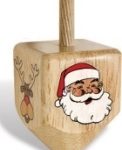25 Big American Product Flops
1. Edsel
In 1957, Ford launched the Edsel, a car the company billed as hot and revolutionary, Problem: It turned out to be sort of “blah.”Ford was enormously successful in 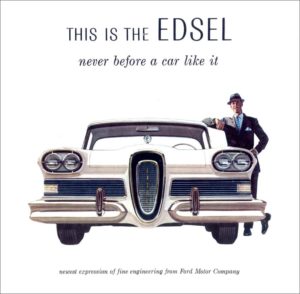 building high expectations for the forthcoming Edsel, but America was equally disappointed. The Edsel tanked. It became a national joke, the car that launched a million punch lines. By November 1959, when Ford finally mercy-killed the Edsel, it had lost an estimated $250 million — nearly $2 billion in today’s dollars. “As it turned out,” Time wrote when production ended, “the Edsel was a classic case of the wrong car for the wrong market at the wrong time. It was also a prime example of the limitations of market research.”
building high expectations for the forthcoming Edsel, but America was equally disappointed. The Edsel tanked. It became a national joke, the car that launched a million punch lines. By November 1959, when Ford finally mercy-killed the Edsel, it had lost an estimated $250 million — nearly $2 billion in today’s dollars. “As it turned out,” Time wrote when production ended, “the Edsel was a classic case of the wrong car for the wrong market at the wrong time. It was also a prime example of the limitations of market research.”
2. New Coke
Taste tests suggested that many customers preferred the sweeter taste of Pepsi over Coke so experts set about creating a “new Coke” that was more appealing than Pepsi’s offering. While some cola drinkers did indeed prefer New Coke over the old formula or even over Pepsi, there was a problem. A vocal customer base felt cheated that their beloved drink had been tampered with and started to boycott the new version. Sales dropped still further until, with a heavy heart, executives at Coke had to perform a “U-turn” and reintroduce the old formula. In essence, Coke forgot to consider one vital element – and that was their brand. Not the price, the appearance or the flavor of their drink but rather the feelings people had about the company. For many people, Coke was a part of their identity. They’d enjoyed it for years and rather like supporting a certain football team the Coke/Pepsi divide helped to define who they were as a person.
3. Betamax
Many of us have heard the story of the two competitors battling it out for dominance in the video cassette market. Strangely, while we all know that VHS was the ultimate winner, with Betamax dying a painful death, the most obvious question is why? After all, most people who tested both formats preferred Betamax citing its far higher quality as the reason for their preference. So if a “better” product lost out to an inferior one, what really happened, and what can we learn from the experience? It turns out that Betamax had an Achilles heel that led to its downfall. While VHS could hold 4 hours by 1977, the Betamax cassette could hold only one hour, which made putting a whole movie on Betamax almost impossible.
4. TouchPad
Introduced in July 2011, the TouchPad was Hewlett Packard’s attempt to compete with Apple’s iPad. With powerful video capability and impressive processing speeds, the TouchPad was widely anticipated to be among the only products that could give Apple a run for its money. Despite large scale press events and promotions, the HP TouchPad was a colossal failure and was discontinued almost immediately,scorned for a lack of apps, sluggish performance, clunky user experience, and frequently errant keyboard presses.
5. IBM PC jr
Once upon a time IBM were the manufacturers of business computers in the form of their IBM PC. Buoyed by its success, and keen to expand its market reach even further, IBM decided to venture into the consumer market by offering a computer specifically designed for home users. Thus, the IBM PCjr was born in 1984. The pre-launch excitement was palpable – it was the “Apple cult” of its day. Computer lovers weren’t just lining up ready to buy the new system months before its launch but they were even shunning equal machines released by IBMs competitors. The pressure was on. Sadly, rather like many over-hyped product launches, the reality failed to live up to expectations. For one, the keyboard was so small and so ugly as to be virtually unusable. Even worse, the machine cost almost double that of similar machines, with no obvious benefits.
6. Bank Of America Debit Card Fee
In 2010, Bank of America announced that it was planning to charge customers a $5 fee to use their debit cards. After an intense customer backlash, the company dropped the plan.
7. Crystal Pepsi
In 1992 Pepsi spotted what it considered to be a gap in the cola market – impressive after a push for caffeine-free lines, cherry cola lines, diet lines and so on. It’s brainchild? Pepsi launched a clear version of its cola drink in 1993.Pepsi mused that Crystal Pepsi would answer a “new consumer demand for purity.” Not so much. The company pulled it from the shelves in 1994. It was like a green donut – maybe tasty, but too unfamiliar to win over customers.
8. Lawn Darts
Lawn darts, everyone’s favorite 1980s backyard game, turned out to be pretty dangerous. The Consumer Product Safety Commission recalled the toys in December 1988 after many were injured and three people died sending the steel darts through the air, according to Popular Mechanics.
9. Clairol’s “Touch Of Yogurt” Shampoo
When Clairol came out with its yogurt-based shampoo in 1979, they thought it would be a success, thanks to widespread interest in the test marketing phase. But it turned out to be a flop; customers apparently don’t want to put food in their hair.
10. The Yugo
The car deemed by many to be one of the worst vehicles ever exported to the U.S. was met with widespread criticism when it landed on American shores in 1986. Available for just $3,990, the car did terribly in crash tests, according to CBS News.
11. Arch Deluxe, McDonald’s
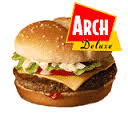 When you think of McDonald’s target demographic, Bobos and “latte drinking liberals” are not the first that come to mind. Nevertheless, in 1996, McDonald’s made a play for adults with a more refined palate and spent $100 million in advertising to introduce the Arch Deluxe. The only thing that really seemed to make the Arch Deluxe “refined” was an unnaturally round piece of peppered bacon. McDonald’s failed in thinking that it could expand to a demographic that was totally at odds with the fast food chain’s brand identity. As they say, you can put lipstick on a pig, but it’s still a pig.
When you think of McDonald’s target demographic, Bobos and “latte drinking liberals” are not the first that come to mind. Nevertheless, in 1996, McDonald’s made a play for adults with a more refined palate and spent $100 million in advertising to introduce the Arch Deluxe. The only thing that really seemed to make the Arch Deluxe “refined” was an unnaturally round piece of peppered bacon. McDonald’s failed in thinking that it could expand to a demographic that was totally at odds with the fast food chain’s brand identity. As they say, you can put lipstick on a pig, but it’s still a pig.
12. Nike Black And Tan Sneakers
Nike launched a sneaker in the lead up to St. Patrick’s Day that offended some Irish people. The shoe called “Black and Tan” shares its name with a British paramilitary unit that attacked Irish civilians in the 1920s.
13. Bic Underwear
Bic has built its brand on the convenience of disposable products. Disposable razors? Disposable lighters? Convenient and affordable. Disposable underwear? Just plain weird. Other than the disposability factor, consumers could not find a link between the underwear and Bic’s other products. Without a unifying factor, people were just confused. In addition, the idea of buying intimate attire from a company that also produces pens apparently does not appeal to most women.
14. Ben-Gay Aspirin
Ben-Gay cream is great for topically relieving aches and pains. But the idea of swallowing Ben-Gay? Not so appealing. That was the problem the company faced when they tried to launch an aspirin. Their first brand extension, Ultra-Strength Ben-Gay, was essentially the same product as the original and was very successful. The aspirin? Not so much.
15. Bottled Water for Pets
People tend to pamper their pets, so it’s not far-fetched to believe consumers might serve bottled water to their cats and dogs. At least that’s what the makers of Thirsty Cat! and Thirsty Dog! must have believed. But despite the fact that the water came in such delicious flavors as Crispy Beef and Tangy Fish, it never seemed to catch on. Go figure.
16. Earring Magic Ken
Barbie and her companions have gone through many incarnations since her creation in 1959, but none is more infamous than “Earring Magic Ken.” Exit classy tuxedos and suits and enter mesh t-shirt, purple leather vest, and earring. Pretty soon “New Ken” was dubbed “Gay Ken” — and parents were not pleased with his fashion-forward style. After an article focusing on Earring Magic Ken’s style appeared in ‘The Stranger’ newspaper, Mattel discontinued production and recalled as many Kens off the shelves as they could.
17. Cocaine Energy Drink
Cocaine is a high-energy drink, containing three and a half times the amount of caffeine as Red Bull. It was pulled from U.S. shelves in 2007, after the FDA declared that its producers, Redux Beverages, were “illegally marketing their drink as an alternative to street drugs.” The drink is still available, however, online, in Europe and even in select stores in the U.S. Despite the controversy, Redux Beverages does not plan to cease production any time soon. You know what they say — there’s no such thing as bad publicity.
18. Frito Lay Lemonade
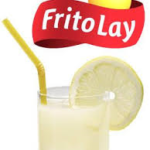 Frito Lay Lemonade might seem like a good idea: Eating salty corn chips makes you thirsty, and lemonade can cure that thirst. Unfortunately, when people think Fritos, “thirst-quenching” is not an adjective that comes to mind. Therefore, Frito Lay’s “logical” brand extension turned out to not be so logical after all.
Frito Lay Lemonade might seem like a good idea: Eating salty corn chips makes you thirsty, and lemonade can cure that thirst. Unfortunately, when people think Fritos, “thirst-quenching” is not an adjective that comes to mind. Therefore, Frito Lay’s “logical” brand extension turned out to not be so logical after all.
19. Rocky Mountain Spring Water
If you’re one of the most popular beer brands in the world, it’s a pretty safe bet that even your most loyal consumers would not be interested in buying bottled water from you. Case in point — Coors Rocky Mountain Spring Water. Spring water from the Rocky Mountains is indeed used during the brewing process of some Coors products. However, when bottled alone, it’s missing one key ingredient — alcohol. Apparently Coors customers just weren’t that into buying water when it wasn’t enhanced by additional ingredients like barley and yeast.
20. Cosmopolitan Yogurt
Cosmopolitan made an interesting decision to launch a brand of yogurt in 1999. Needless to say, the yogurt market was already saturated, and Cosmo’s readers were content enough reading the magazine
21. Watermelon Oreo cookie
The biggest product flop in the food sector in 2013 was the Watermelon Oreo, which debuted on June 10, and was only available nationwide for a limited time, says Hester Jeon, an industry analyst with IBISWorld, a Santa Monica-Calif.-based industry research company. In the complaint department: The cookie tasted “vaguely like watermelon” but left an unpleasant aftertaste, he says. In case you missed them, the Watermelon Oreos came with bright green-and-pink filling between two vanilla cookie wafers.
22. Harley Davidson Perfume
Harley-Davidson fans are known as very loyal customers. However, even the beloved motorcycle brand can go too far. T-shirts and cigarette lighters were one thing, but when the company started to make aftershave and perfume, fans were not impressed. As the saying goes, less is more, and Harley-Davidson had spread itself too thin. Or maybe people just weren’t too keen on the idea of smelling like a motorcycle.
23. Colgate Kitchen Entrees
In what must be one of the most bizarre brand extensions ever Colgate decided to use its name on a range of food products called Colgate’s Kitchen Entrees. Needless to say, the products did not take off and never left U.S. soil. The idea must have been that consumers would eat their Colgate meal, then brush their teeth with Colgate toothpaste. The trouble was that for most people the name Colgate does not exactly get their taste buds tingling.
24. The Apple Newton
In the age of iPods, iPhones and MacBook Pros, it’s hard to imagine a time before everything Apple touched turned to gold. Oh but there was one. And it wasn’t all that long ago. Back in 1993, Apple released a handheld device they hoped would change personal computing. It was officially called MessagePad, although it was popularly known as Newton (the more captivating name of its operating system). It was overpriced ($700-1000) and clunky. Its handwriting recognition software – which had been touted by marketers as “unprecedented” – was highly inaccurate. It was discontinued in 1998, but the Newton was not a complete debacle. After all, the gadget did become a template for the PDA craze followed.
25. The Can Grip
Have you ever found yourself drinking a can of beer or fizzy soft drink and found the experience a little too much effort? Well, us neither, but apparently somebody at ‘Go 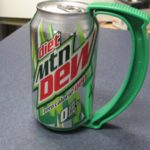 Pong’ thought that holding a can with your hand was a little too difficult and invented the plastic can grip – essentially a can handle. If you’re doubly inept, you can also get a matching version to turn a bottle into a mug.
Pong’ thought that holding a can with your hand was a little too difficult and invented the plastic can grip – essentially a can handle. If you’re doubly inept, you can also get a matching version to turn a bottle into a mug.
BONUS: The Santa Dreidel
Why did this product fail? It’s a Santa Dreidel. Think about it.
Resources. Check out these lists and resources used in the compilation of this post.
http://www.huffingtonpost.com/2012/09/28/company-product-fails_n_1923621.html
http://www.businessinsider.com/biggest-product-failures-in-business-history-2014-7?op=1
http://saleshq.monster.com/news/articles/2655-the-20-worst-product-failures
http://time.com/13549/the-10-worst-product-fails-of-all-time/
Tags: product failures, product flops, Valcort





